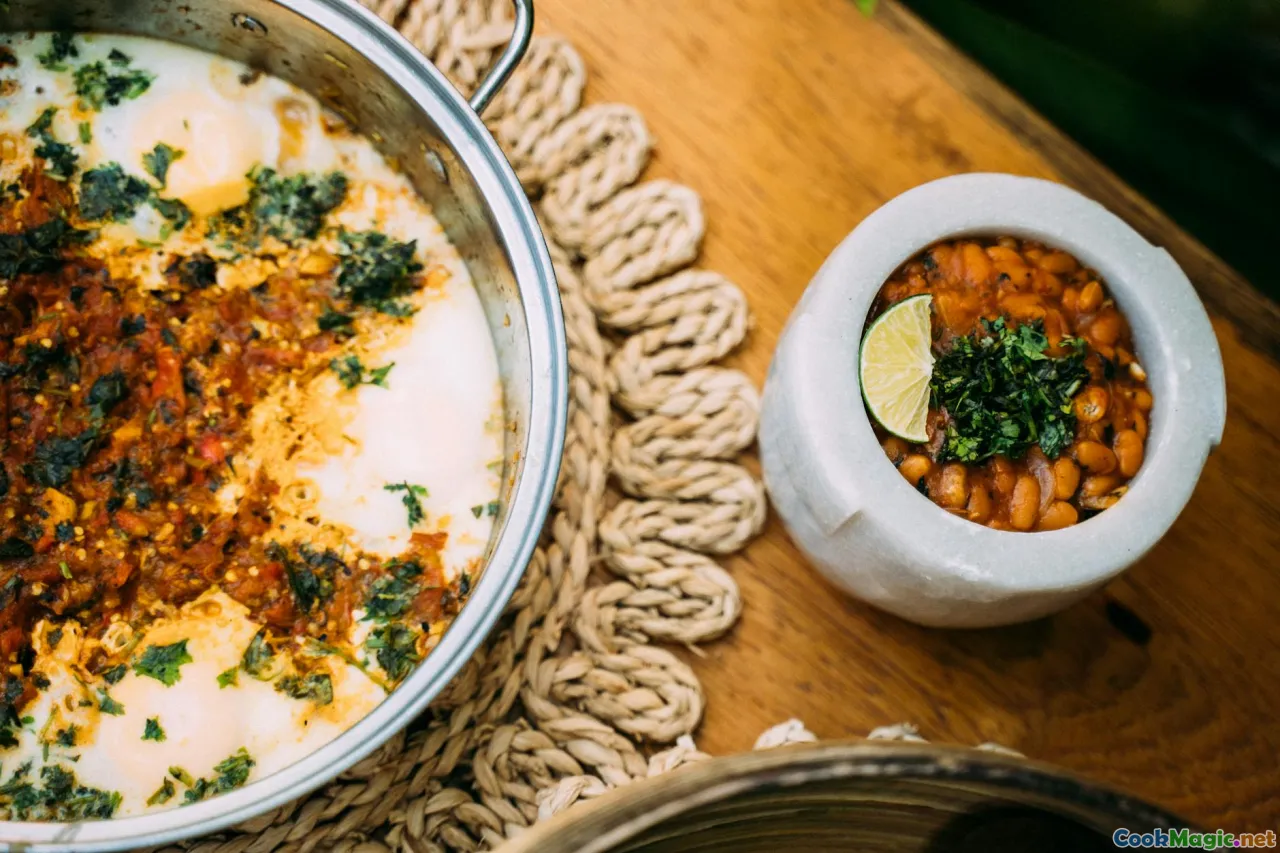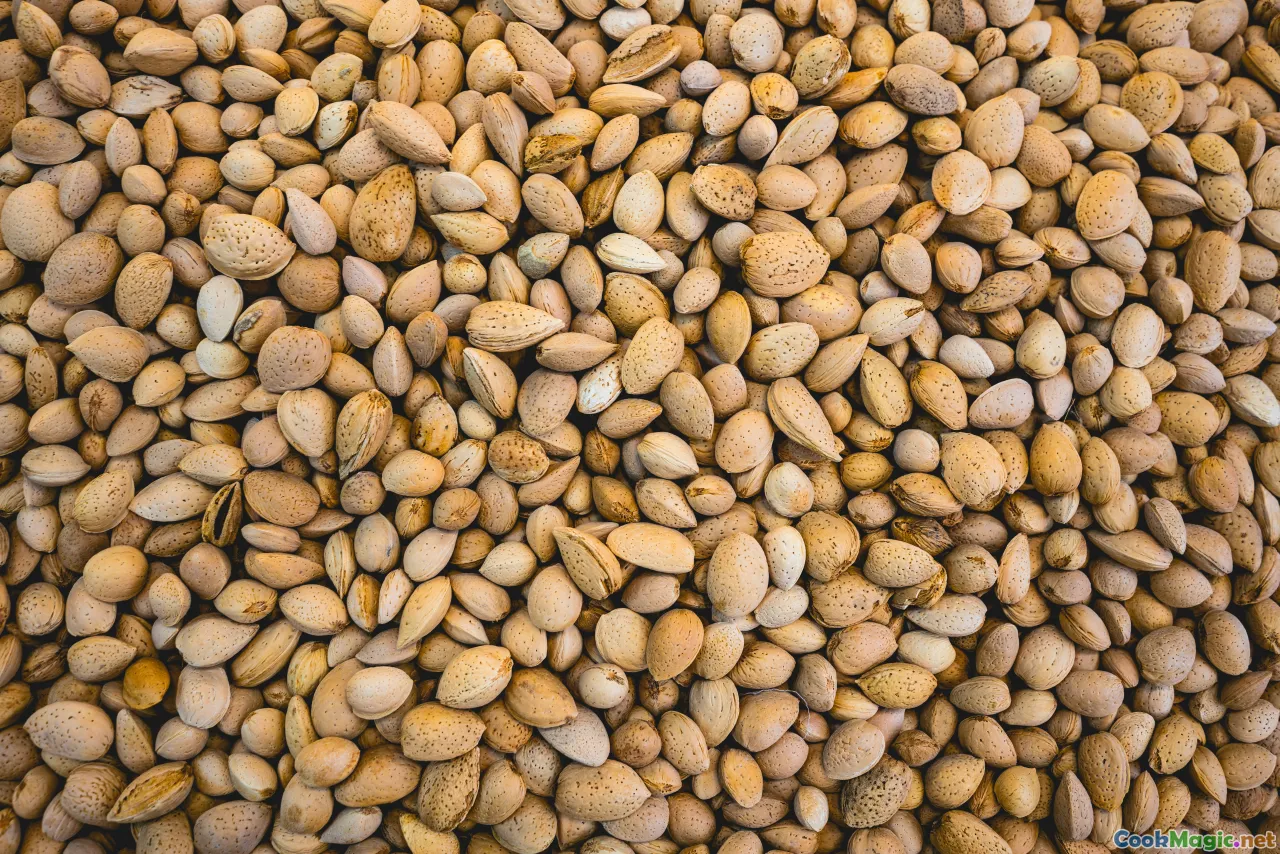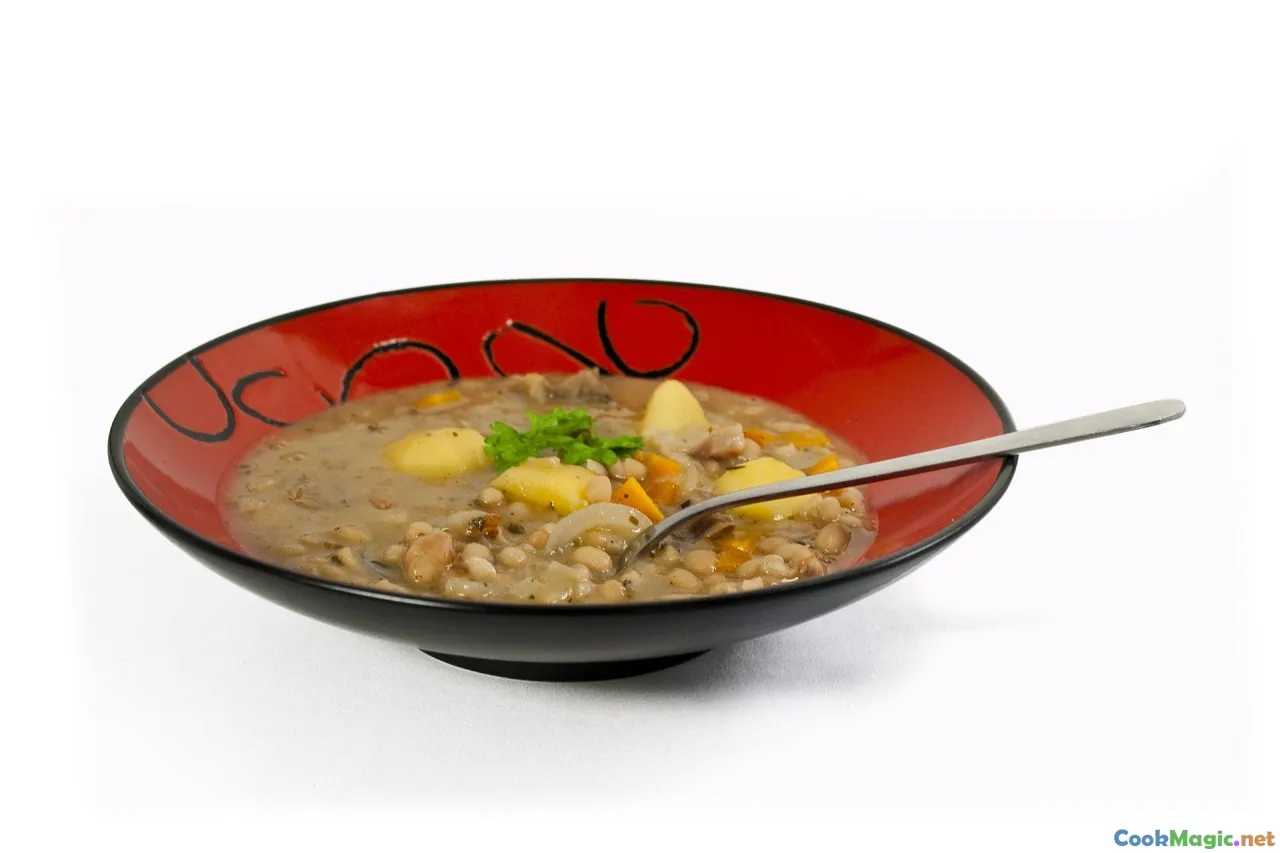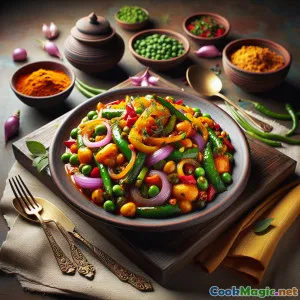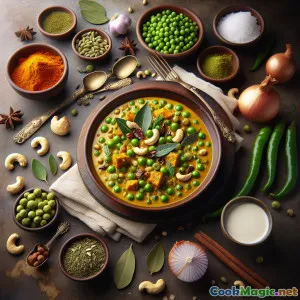
Ensopado Confortável de Feijão Ruandês e Amendoim
(Rwandan Bean & Groundnut Comfort Stew)
(0 Avaliações)0
713
julho 30, 2025
Reportar um problema
Ingredientes
-
200 grams Feijão vermelho caroço seco
(Soaked overnight for faster cooking)
-
100 grams Amendoim cru descascado
(Unsalted roasted peanuts can be substituted)
-
1 medium Cebola amarela
(Finamente picado)
-
1 large Cenoura
(Picado em cubos pequenos)
Dentes de alho, 2
-
2 medium Tomate
(Em cubos)
-
2 tablespoons Óleo de cozinha
(Preferencialmente óleo de girassol ou canola)
-
1 teaspoon Sal
(A gosto)
-
1/2 teaspoon Pimenta preta
(Recém quebrado, a gosto)
-
1 medium Banana-da-verde
(Peeled and cubed for authenticity)
-
2 tablespoons Coentro Fresco
(Picado, para enfeitar)
-
900 ml Água
(Additional if needed for soupiness)
(Soaked overnight for faster cooking)
(Unsalted roasted peanuts can be substituted)
(Finamente picado)
(Picado em cubos pequenos)
(Em cubos)
(Preferencialmente óleo de girassol ou canola)
(A gosto)
(Recém quebrado, a gosto)
(Peeled and cubed for authenticity)
(Picado, para enfeitar)
(Additional if needed for soupiness)
Nutrição
- Porções: 4
- Tamanho da Porção: 1 bowl (~250g)
- Calories: 380 kcal
- Carbohydrates: 59 g
- Protein: 18 g
- Fat: 9 g
- Fiber: 13 g
- Sugar: 5 g
- Sodium: 700 mg
- Cholesterol: 0 mg
- Calcium: 75 mg
- Iron: 4 mg
Instruções
-
1 - Soak and Prep Beans:
If using dried beans, rinse and soak overnight in cold water. Drain and set aside.
-
2 - Prepare Groundnuts:
Roughly crush or grind the groundnuts into coarse pieces using a mortar & pestle or food processor. Set aside.
-
3 - Cook Base Vegetables:
Heat oil over medium in a large pot. Sauté onions for 2-3 min until soft, then add garlic and carrot. Cook, stirring, 3 min. Add tomatoes, cook 2 min more.
-
4 - Simmer Beans and Plantain:
Add beans, groundnuts, and 900ml water. Bring to boil, reduce heat to simmer. If using plantain, add now. Cover and cook, stirring occasionally, until beans are tender and flavors meld (about 35–40 min; taste and add water if mixture thickens too much).
-
5 - Season and finish:
Season with salt and pepper. Mash some beans with the back of a spoon for creaminess, leaving most whole. Simmer uncovered 5 min until consistency is hearty, like a stew.
-
6 - Serve:
Ladle into bowls and garnish with fresh coriander. Serve warm, optionally with steamed rice, sweet potatoes, or Ugali.
If using dried beans, rinse and soak overnight in cold water. Drain and set aside.
Roughly crush or grind the groundnuts into coarse pieces using a mortar & pestle or food processor. Set aside.
Heat oil over medium in a large pot. Sauté onions for 2-3 min until soft, then add garlic and carrot. Cook, stirring, 3 min. Add tomatoes, cook 2 min more.
Add beans, groundnuts, and 900ml water. Bring to boil, reduce heat to simmer. If using plantain, add now. Cover and cook, stirring occasionally, until beans are tender and flavors meld (about 35–40 min; taste and add water if mixture thickens too much).
Season with salt and pepper. Mash some beans with the back of a spoon for creaminess, leaving most whole. Simmer uncovered 5 min until consistency is hearty, like a stew.
Ladle into bowls and garnish with fresh coriander. Serve warm, optionally with steamed rice, sweet potatoes, or Ugali.
Mais sobre: Ensopado Confortável de Feijão Ruandês e Amendoim
Imvange y’Ibishimbo n’Amashaza: Nourishing Rwanda in One Pot
Imvange y’Ibishimbo n’Amashaza is a dish with profound roots in Rwandese heritage. Translated as "stir of beans and groundnuts," it embodies the agricultural richness of the Rwanda hills. This stew transforms humble, staple ingredients—beans, peanuts, a garden's worth of vegetables—into total comfort with deep flavors and inviting texture. It is both tradition preserved and a lesson in delicious economy.
Historical & Cultural Significance
Rwanda’s lush, volcanic soil makes it ideal for cultivating beans (ibishimbo) and groundnuts (amashaza). Beans provide sustenance and vital protein in the majority of rural households. Groundnuts, sometimes called African peanuts, add richness to many classic Rwandan dishes. The marriage of these two, often with a little onion, carrot, and tomato from a home garden, fed generations and is said to be a taste of house and heart.
Imvange finds its way into communal meals, often enjoyed with local sides such as Ugali (maize meal), steamed rice, or matoke (green plantains or cooking bananas). Households might vary the vegetables—a touch of cabbage, a handful of fresh cassava leaves, or ripe plantain for a hearty sweet note. In some areas, both dry and fresh groundnuts are used, and in lean times, beans make up the bulk of the bowl.
Flavor & Texture Notes
This stew is nutty, deeply savory, and laced with the language of home cooking. The beans remain chunky, holding their own, while just enough are mashed at the finish so the broth turns velvety—helped by the peanuts, which release oils and make the soup luxuriously creamy. Adding plantains (traditional, but not essential) imbues everything with a gentle grassy sweetness. A standard seasoning of salt and ancho ever faint whisper of black pepper finishes it simply.
Cooking Tips, Substitutions, & Variations
- Bean Options: Use any dry beans—cranberry beans or black-eyed peas are fantastic stand-ins for red kidneys.
- Peanuts: Raw, unsalted types are standard; roast for more intense flavor or use a peanut butter swirl if whole nuts aren’t available (reduce oil slightly if so).
- Vegetables: Don’t be shy to add spinach, shredded cabbage, or chayote for more green fiber.
- Plantains: Brings added comfort and is highly encouraged if available, but potatoes, yams, or even corn make good regional swaps.
- Peanut Allergy: Almonds or cashew butter work in moderation, though changing the flavor. For pure bean stew, simply omit.
- Creamy Factor: Mash more beans or blend a scoop for an even silkier broth; a drizzle of coconut milk is not authentic, but delightful.
Service & Storage
Imvange y’Ibishimbo n’Amashaza tastes best warm and same-day but does improve after time—a day in the fridge thickens the flavors. Freezes well; simply reheat slowly to preserve bean textures.
Serve it as the centerpiece of a vegan meal, with steaming rice, golden sweet potatoes, or a wedge of chewy, maize-based Ugali. A scatter of fresh coriander or parsley adds garden brightness. For personal flair, a dash of chili oil or a dusting of local smoked paprika can be transformative.
Final Thoughts
Few dishes capture everyday East African comfort like this, staying true to its roots while welcoming improvisation. In the story of Rwandan home kitchens, this bean-and-nut stew is humble in its appearance, generous in spirit, and enduring in its ability to nourish. Cooking and sharing Imvange y’Ibishimbo n’Amashaza is a reminder that the simplest foods, held in memory and heart, are often the most extraordinary—revealing both personal and collective legacies with every warm spoonful.

